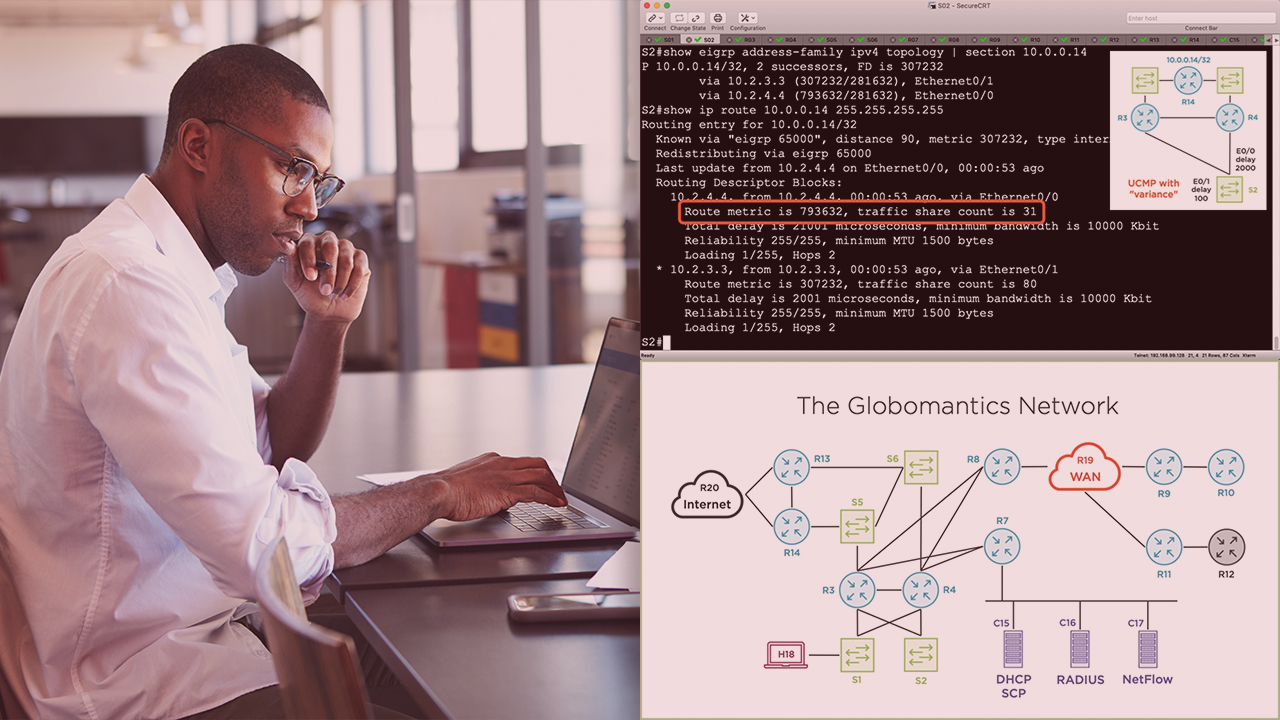- Course
Cisco Advanced Routing: Enterprise Networks
Enterprise networking has always been a complex web of overlapping technologies. This course will teach you how to configure and troubleshoot routing protocols and IP services using a large-scale network topology.

- Course
Cisco Advanced Routing: Enterprise Networks
Enterprise networking has always been a complex web of overlapping technologies. This course will teach you how to configure and troubleshoot routing protocols and IP services using a large-scale network topology.
Get started today
Access this course and other top-rated tech content with one of our business plans.
Try this course for free
Access this course and other top-rated tech content with one of our individual plans.
This course is included in the libraries shown below:
- Core Tech
What you'll learn
Network engineers have long struggled to keep pace with sprawling enterprise networks and the technical complexities associated with that expansion. In this course, Cisco Advanced Routing: Enterprise Networks, you’ll learn to design, implement, and troubleshoot growing networks using a large topology as a testbed. First, you’ll explore common enterprise routing protocols, such as Cisco EIGRP and BGP, and deploy them in accordance with best practices. Next, you’ll discover Cisco Dynamic Multipoint VPN, expanding the network to new WAN sites. Finally, you’ll learn how to optimize enterprise networks using a subset of common IP services relating to management, monitoring, and security. Most of these topics are discussed using both IPv4 and IPv6 in the context of dual-stacking. When you’re finished with this course, you’ll have the skills and knowledge of Cisco enterprise networking needed to manage small to medium size enterprise networks.
Cisco Advanced Routing: Enterprise Networks
-
Course Prerequisites, Business Context, and Resources | 4m 5s
-
How Does EIGRP Work? | 3m 53s
-
Demo: Basic Configuration in the Globomantics Core | 4m 21s
-
Demo: A Deeper Exploration of EIGRP Operations | 4m 56s
-
The EIGRP Feasibility Condition and Query Domain Concept | 5m 23s
-
Demo: Fast-failover Using Feasible Successors | 3m 39s
-
Demo: Shrinking the Query Domain Using Summarization | 4m 18s
-
Module Summary | 30s

